
Not the first Betsy-Tacy book, but I like this cover, illustrated by the famous Lois Lenski.
So, since she is the authority at this blog on all things Betsy-Tacy, here is a blurb that Susan has so kindly provided for your edification regarding the substance of the books:
“O tempora! O mores!” groaned Betsy and Tacy, taking Cicero’s classic cry for their own. (Betsy Was a Junior, 182)If anything can sum up the appeal of the Betsy-Tacy series by Maud Hart Lovelace, it is this quote. What times! What customs! Betsy and Tacy may have quoted Cicero to exaggerate their own misery in studying for midterms, but I don’t think Maud Hart Lovelace would be unhappy to hear the phrase in a nostalgic instead of disgusted sense.
Betsy-Tacy books are the largely autobiographical accounts of young girls playing make-believe and telling stories at the turn of the twentieth century, and later of young ladies navigating high school society and looking towards their futures. Reading them gives the impression that these were the best years to grow up, that things were never so rosy as they were in those decades in Minnesota. What times Betsy and Tacy have! They play in piano boxes, dress up in their mothers’ long gowns to pay calls on neighbors, meet opera stars, and have endless socials with their friends in high school. What customs! It is très chic to put your hair in a pompadour. A sure-fire way to have a successful party is for your girlfriends to come with their fathers’ old suits (!), and an equally safe bet for a good time is to have an unironic night of singing (very different from karaoke parties today).
Basically Betsy and Tacy have adolescences where imagination and friendship are the most important things. How can you not wish you lived in those times and with those customs?
Author Maud Hart Lovelace, born 1892/died 1980, wrote these books about growing up in Mankato, MN, which is the inspiration for the fictional Deep Valley in the books. The character of Betsy Ray is based on herself, and you can read a bit more about the series and how it reflects and also diverges from her life here, if you are interested. A quick roundup of interesting tidbits gleaned from the ever-insightful Wikipedia:
- In 1992, only the first 4 books were still in print, so the Betsy-Tacy Society launched a letter writing campaign to Harper Collins that resulted in the series being reprinted.
- In the movie You’ve Got Mail, Meg Ryan’s character, a bookstore owner, describes the first two books in the series to the young girl Annabel Fox (somehow related to Tom Hanks’ character—it’s been awhile since I’ve seen the movie), who decides she must have them all.
- The city of Mankato declared Betsy-Tacy day on October 7th, 1961.
I think it’s cool that the books were written at progressively more difficult reading levels as the characters age, so that young readers can grow along with the characters. I wish I had come across these in my youth (kind of surprised that I didn’t, since they are so popular!), because it’s fun to grow up with favorite book characters as they are also growing up, similar to the Little House books.
So I again wrangled my cousin (and aunt too, this time) to accompany me on a visit to Betsy and Tacy’s houses in Mankato on a Saturday. Turns out they’re open only on Saturday and only for 2 hours, so if you want to visit, plan accordingly! After Siri gave us some confusing driving instructions involving a right turn into someone’s house (what were Asimov’s laws of robotics, again?), we wended our way through a cute, leaf-shaded neighborhood full of interesting old architecture before arriving at the houses. These are just two houses in a neighborhood—there is no designated parking structure or anything, so we parked along the street and walked to the houses. First up was Tacy’s House, where Maud Hart Lovelace’s friend Bick (called Tacy, in the books) lived.



Inside Tacy’s house is where you pay admission and join a tour going to Betsy’s house. It is also an interpretive center with lots of displays, information, and artifacts relating to the books and author. A little gift shop is also located here! Sadly, I could not find the item that Susan saw on their website, but I found some other cute notecards to take their place.
Here is the bow window in Tacy’s house, and what the interpretive sign had to say about it: “The most attractive feature of the house, the bow window in the dining room has not been changed other than the adding of a window sill. Here is where Maud and Bick used to cut out paper dolls, Rose Kenney sat and did her darning, and Patrick Kenney read the paper or played his violin.”


Here is a sampling of some of the items and displays on view in Tacy’s house:
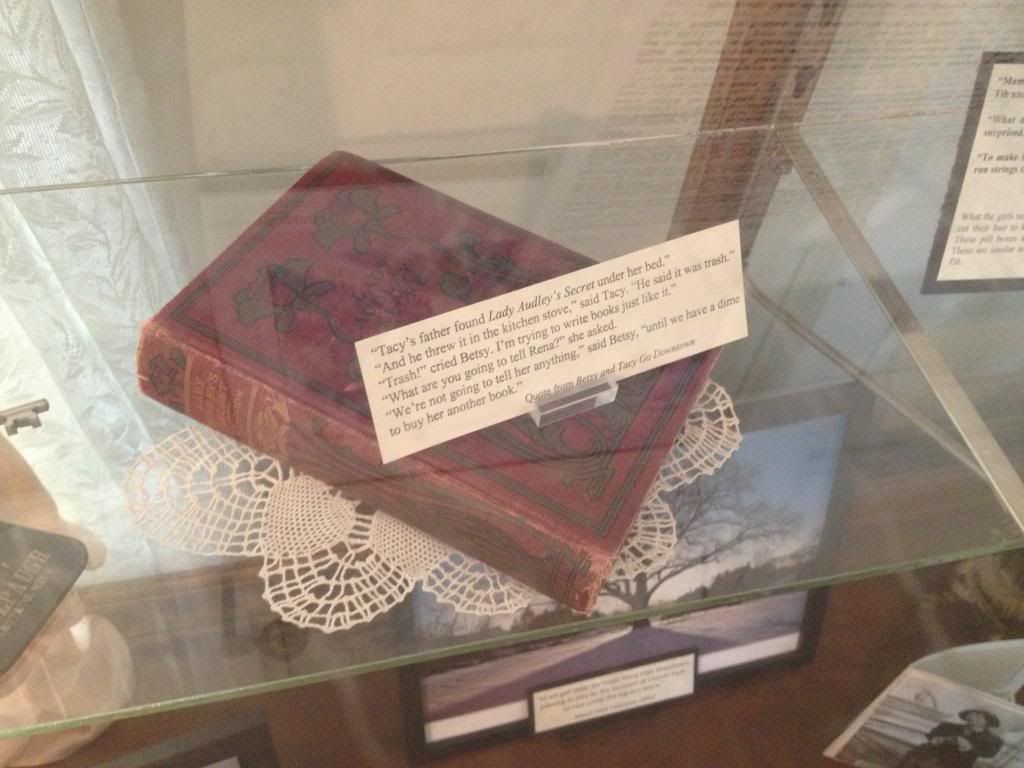
A copy of the book Lady Audley’s Secret that Tacy’s dad tossed into the stove because he thought it was “trash!”

Photos of the gang that inspired characters for the Betsy-Tacy books. I wonder if they all read them, and if they did, were they able to identify themselves?

A collection of Betsy-Tacy books featuring different cover art.

An adorable little diorama of Betsy’s 10th birthday party.

My favorite of a collection of drawings created for the Save Betsy and Tacy’s Houses campaign.

An original Lois Lenski illustration from Betsy-Tacy.

The dish that Maud Hart Lovelace’s father gave to her mother on their wedding anniversary, as written in Betsy in Spite of Herself.

The brass bowl that Maud Hart Lovelace’s mother bought for herself on Christmas, as fictionalized in Heaven to Betsy.
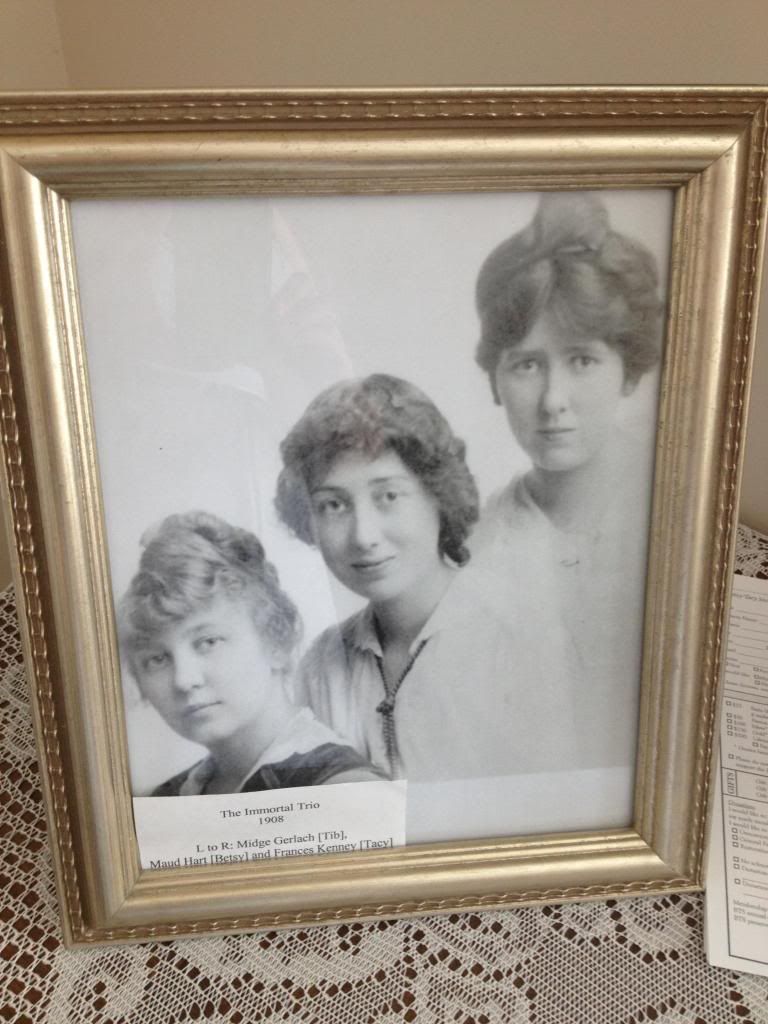
From left to right, the girls who inspired Tib, Betsy, and Tacy (real names Midge, Maud, and Frances/Bick).
By the time we finished wandering around Tacy’s, a tour was departing for Betsy’s house across the street. The cheery yellow home has been restored to look just as it did when the author lived there from 1892-1906. There are more artifacts owned by the author and her family members on display there, along with period pieces acquired elsewhere, but meant to evoke what the home would’ve looked like at the time, or to reflect the furnishings depicted in the illustrations to the books. The tour guide said they are always working and looking for pieces that more closely represent what is described in the books!



Betsy’s house!


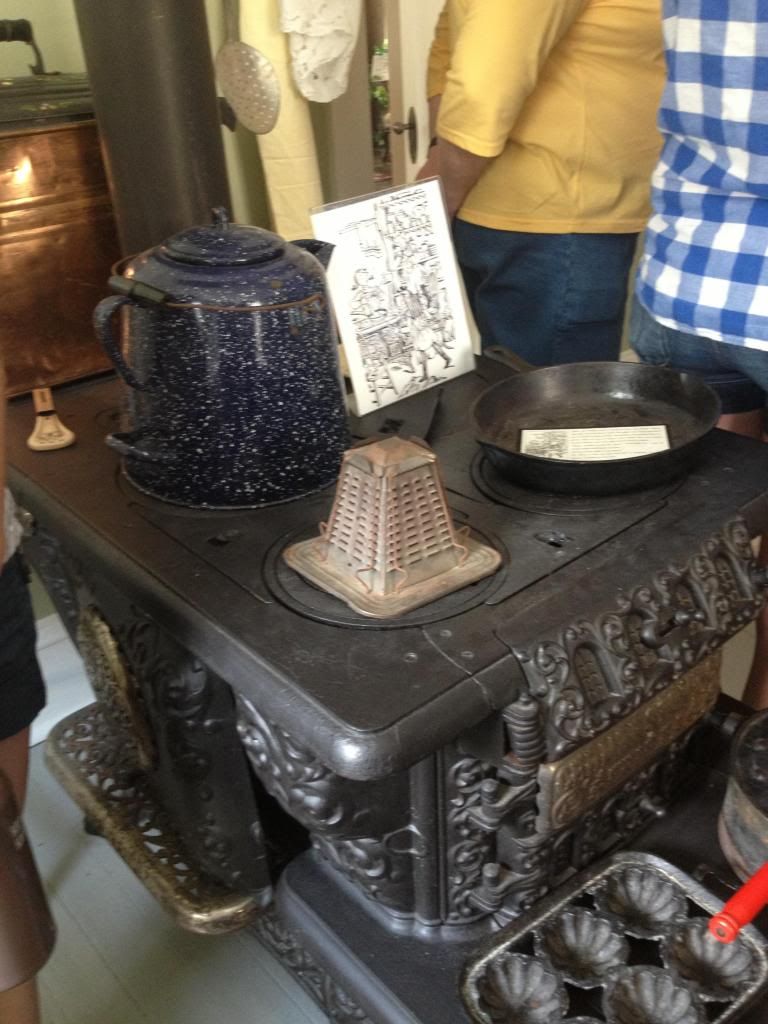

The kitchen stove was pretty cool, but I can’t imagine cooking on one—there would be quite a learning curve before my baked goods stopped turning out burnt! Fun side note: That little tin lopped-top pyramid device is a toaster!

The guide explained to us that kitchen walls of the time were often painted this green color, because the paint (from France?) contained arsenic, so when the flies landed on it they would taste it with their feet, get poisoned, and die, and no longer be kitchen nuisances! My cousin gamely took on the role of fly in this photo.

The upstairs of the house is currently being renovated, but here’s a shot from the bedroom on the ground floor. The guide said that they’re looking for a bed that more closely resembles the one in the illustration, but this is what they’ve got filling in for now.

Here are Maud’s father’s actual rocking chair and footstool, clearly well-loved and -used. On the table are newspapers like he liked to read while sitting in his chair.


That’s a room-heating stove, if I remember correctly. It appears in the book illustration perched on top.

Maud Hart Lovelace’s own dropleaf table, which she fashioned into a writing desk by flipping up one leaf and putting it up against a wall.

The piano with some sheet music and photos displayed on it, being examined by a couple of fellow tourers.

The dining room table, all set and ready for tea!
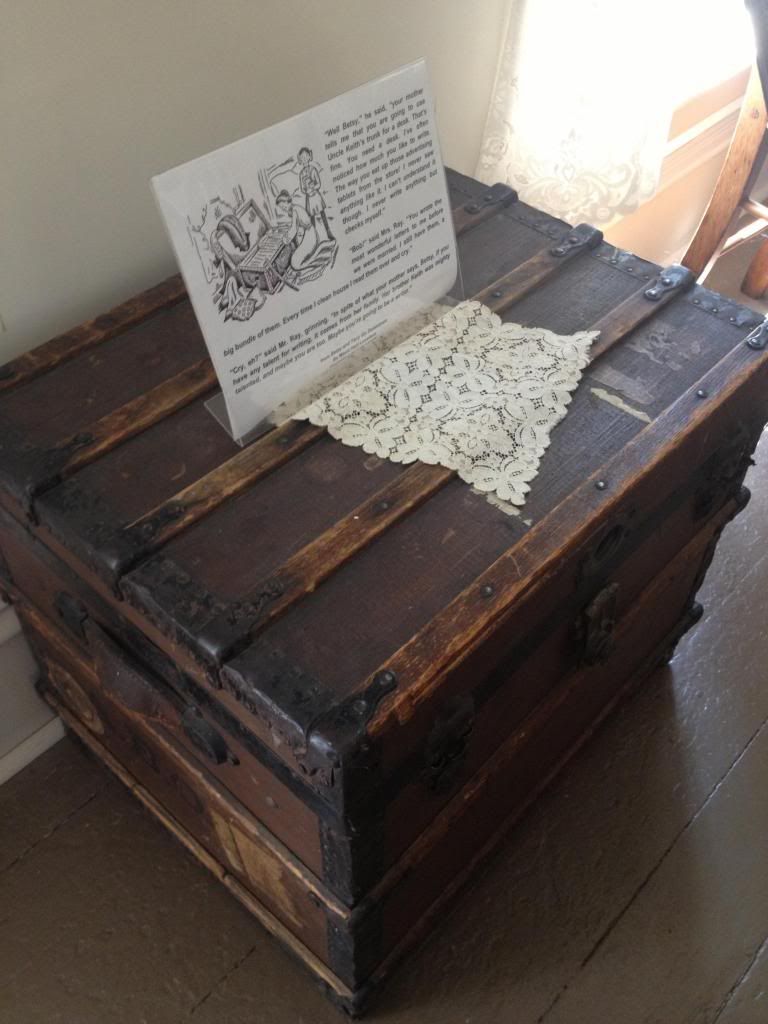
This is Maud/Betsy’s uncle’s trunk that she used as a writing desk, since she loved to write so much and they figured she needed a good place to do it.


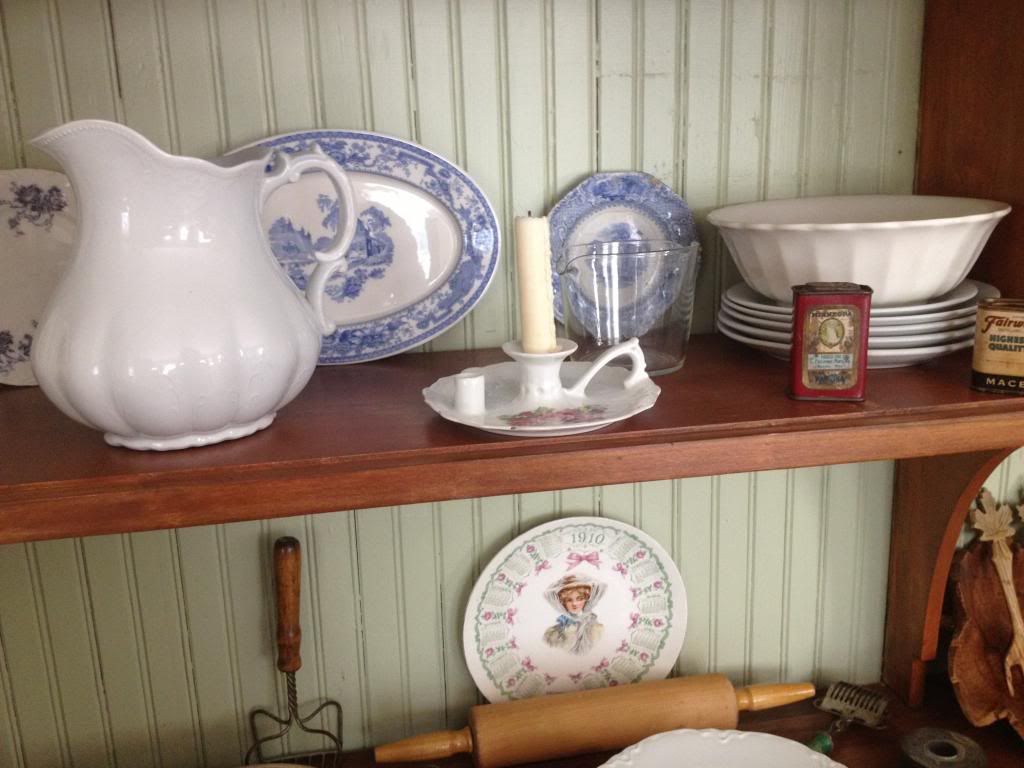
I believe the guide told us that the blue and white dishes in this photo were owned by Maud Hart Lovelace.

Cool old silverware in the kitchen!

A dry sink, so-called because it had no drain outlet and had to be dumped outside. Old kitchens are so interesting to me—how did they do it? It must’ve been so much more difficult to prepare food in the past.
Being a bit of a stitcher myself, I was fascinated by all the retro-vintage stitchery found around the house and museum. Inspiration for future projects!
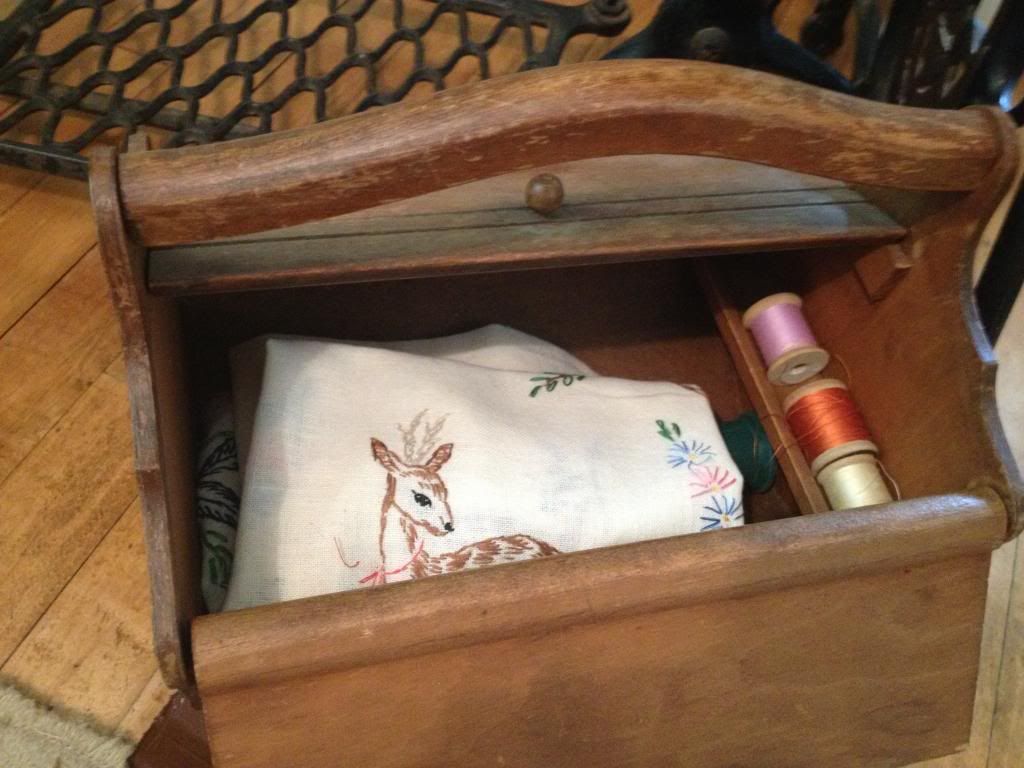


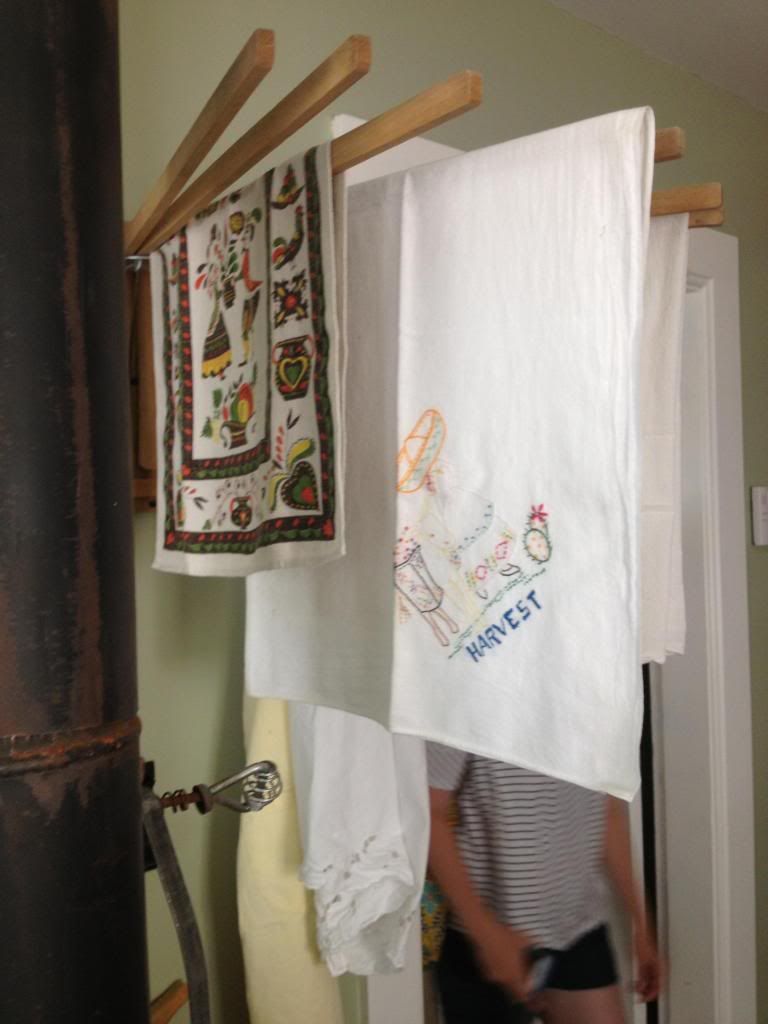
Last but not least, I stopped by the bench at the top of a little hill that figured into the stories. Susan, tell us some more about the bench!!!
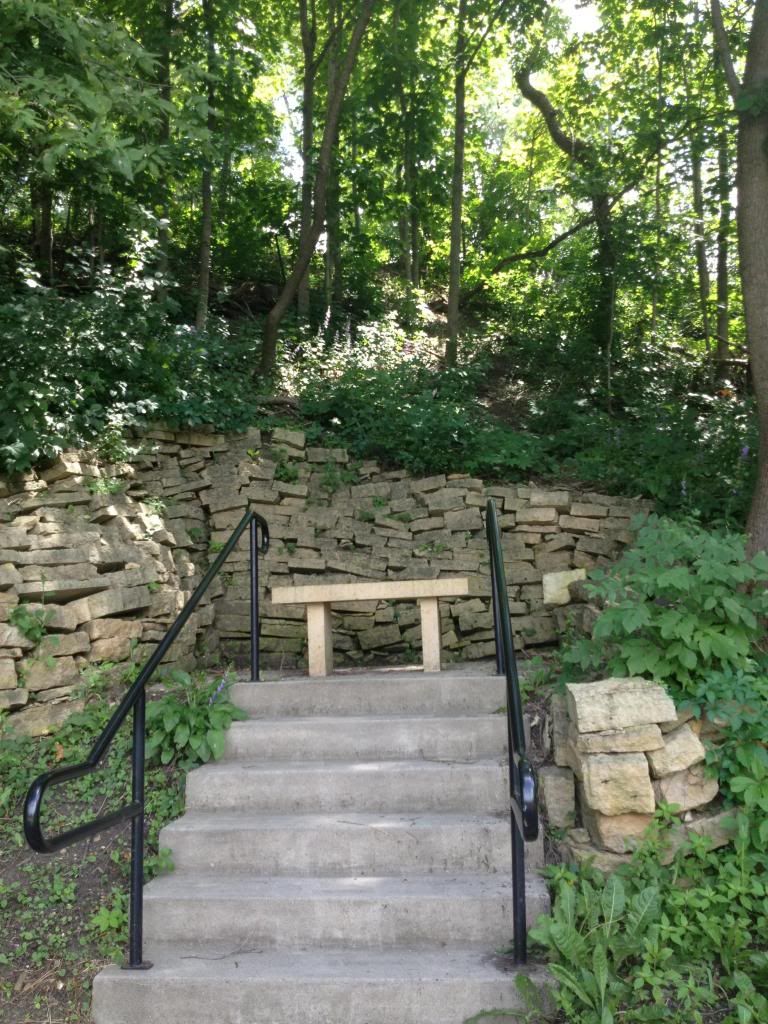
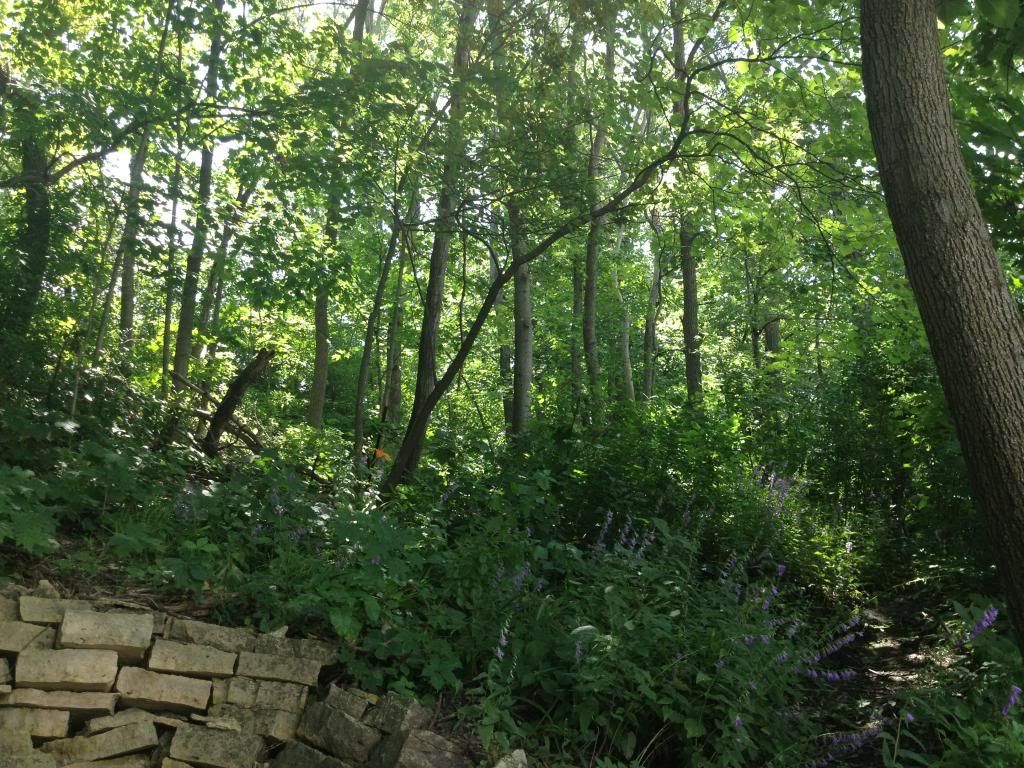
It was a fun little visit to a cute museum. Even not having read the books, it was interesting for the historical aspect, and now I think I’d like to retroactively read them. I’d recommend the trip for Betsy-Tacy fans, kid lit fans, Lois Lenski fans, history buffs, and anyone who enjoys a peek into the past!
The Betsy-Tacy Houses are open from March to December, on Saturdays from 1:00 – 3:00 p.m, with tours of Betsy’s house leaving at the top of the hour and half hour. Admission is $5 for adults, $2 for children ages 6-16, and free for 5 and under. Special house tours and visits can be arranged for other days of the week. Visit the Betsy-Tacy Society’s website at www.betsy-tacysociety.org for more information about the books and Maud Hart Lovelace, special closures, and other details.











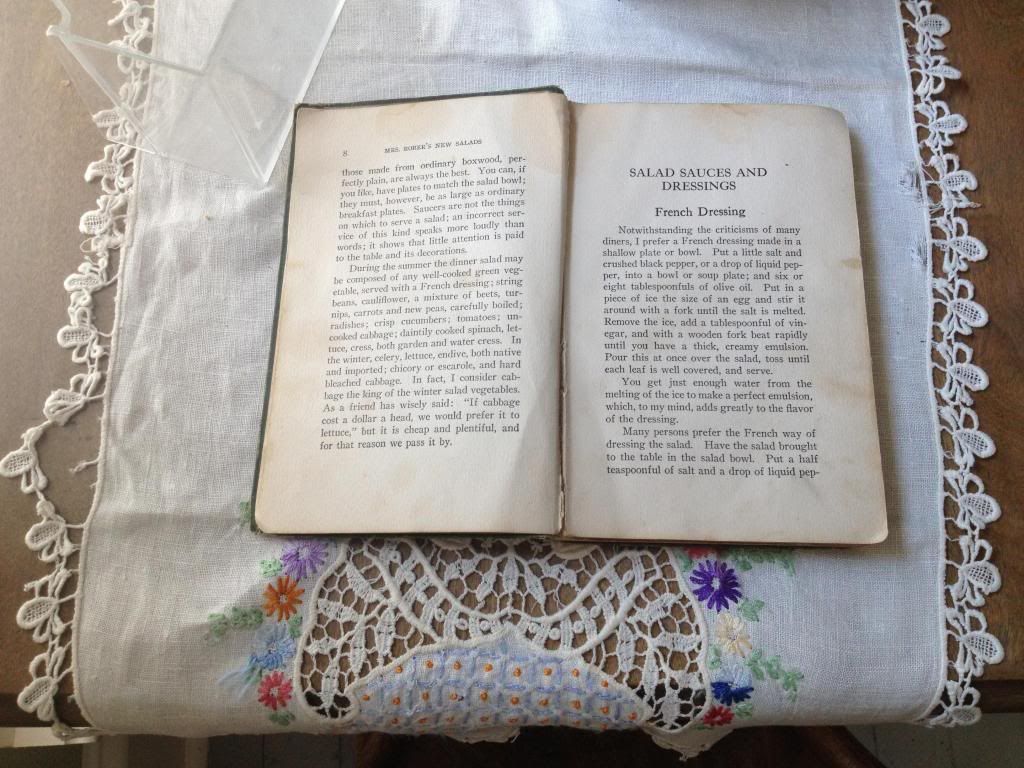
2 comments:
I love these literary travelogues! Mankato sounds like the equivalent of the Harry Potter theme park, but with history instead of magic (and a much cheaper ticket!).
As for the Bench on Hill Street, it's the first place where Betsy sees Tacy, and it's their go-to place for "picnics" (dishes of dinner that they're allowed to bring outside) throughout childhood. When Betsy's family moves in Heaven to Betsy, Betsy's first thought is that she doesn't want to leave her old house next to the bench she shares with Tacy. So the bench is a symbol of their friendship and their childhood.
Other thoughts in backwards order... I am coveting the maple leaf salad bowl and utensils. Yes, that counts as a sideboard. And WOW about the green paint! How quickly would it take a fly to die? I can imagine a not-dead-yet fly bringing arsenic to food being prepared in the kitchen. Such a clever method of controlling flies though! Also, the toaster rocks.
The story of Betsy/Maud's mother buying the brass bowl is really cute. She spends about a month telling everyone that she wants that bowl, and only that bowl, for Christmas. Her husband says he won't get her a house gift for Christmas when she should have something more special, but Mrs. Ray is adamant that she really wants it. Every day she asks Mr. Ray why the bowl is still in the store window, and he keeps telling her that he's getting her something else. Finally on Christmas Eve, Mr. Ray goes to buy the bowl, but it's already gone! The shopkeeper says an out-of-town person bought it. Mr. Ray returns home feeling extremely guilty, and has to confess that she really isn't getting the bowl for Christmas. And then everyone is shocked (and delighted) the next morning to discover that Mrs. Ray was the mysterious buyer. :-)
Yay, thanks for all the info! I wish you had been along to tell me about these things on the tour. As for the fly-killing paint, both the tour-goers and the guide were skeptical about its effectiveness. Sounds like it could've been a successful advertising gimmick to me... Then again, I'm not a fly, so I couldn't really say one way or the other. :)
Post a Comment